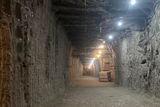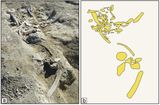Physicists apply quantum squeezing to a nanoparticle for the first time
Physicists at the University of Tokyo, Japan have performed quantum mechanical squeezing on a nanoparticle for the first time. The feat, which they achieved by levitating the particle and rapidly varying the frequency at which it oscillates, could allow us to better understand how very small particles transition between classical and quantum behaviours. It could also lead to improvements in quantum sensors.
Oscillating objects that are smaller than a few microns in diameter have applications in many areas of quantum technology. These include optical clocks and superconducting devices as well as quantum sensors. Such objects are small enough to be affected by Heisenberg’s uncertainty principle, which places a limit on how precisely we can simultaneously measure the position and momentum of a quantum object. More specifically, the product of the measurement uncertainties in the position and momentum of such an object must be greater than or equal to ħ/2, where ħ is the reduced Planck constant.
In these circumstances, the only way to decrease the uncertainty in one variable – for example, the position – is to boost the uncertainty in the other. This process has no classical equivalent and is called squeezing because reducing uncertainty along one axis of position-momentum space creates a “bulge” in the other, like squeezing a balloon.
A charge-neutral nanoparticle levitated in an optical lattice
In the new work, which is detailed in Science, a team led by Kiyotaka Aikawa studied a single, charge-neutral nanoparticle levitating in a periodic intensity pattern formed by the interference of criss-crossed laser beams. Such patterns are known as optical lattices, and they are ideal for testing the quantum mechanical behaviour of small-scale objects because they can levitate the object. This keeps it isolated from other particles and allows it to sustain its fragile quantum state.
After levitating the particle and cooling it to its motional ground state, the team rapidly varied the intensity of the lattice laser. This had the effect of changing the particle’s oscillation frequency, which in turn changed the uncertainty in its momentum. To measure this change (and prove they had demonstrated quantum squeezing), the researchers then released the nanoparticle from the trap and let it propagate for a short time before measuring its velocity. By repeating these time-of-flight measurements many times, they were able to obtain the particle’s velocity distribution.
The telltale sign of quantum squeezing, the physicists say, is that the velocity distribution they measured for the nanoparticle was narrower than the uncertainty in velocity for the nanoparticle at its lowest energy level. Indeed, the measured velocity variance was narrower than that of the ground state by 4.9 dB, which they say is comparable to the largest mechanical quantum squeezing obtained thus far.
“Our system will enable us to realize further exotic quantum states of motions and to elucidate how quantum mechanics should behave at macroscopic scales and become classical,” Aikawa tells Physics World. “This could allow us to develop new kinds of quantum devices in the future.”
The post Physicists apply quantum squeezing to a nanoparticle for the first time appeared first on Physics World.


















.gif)

